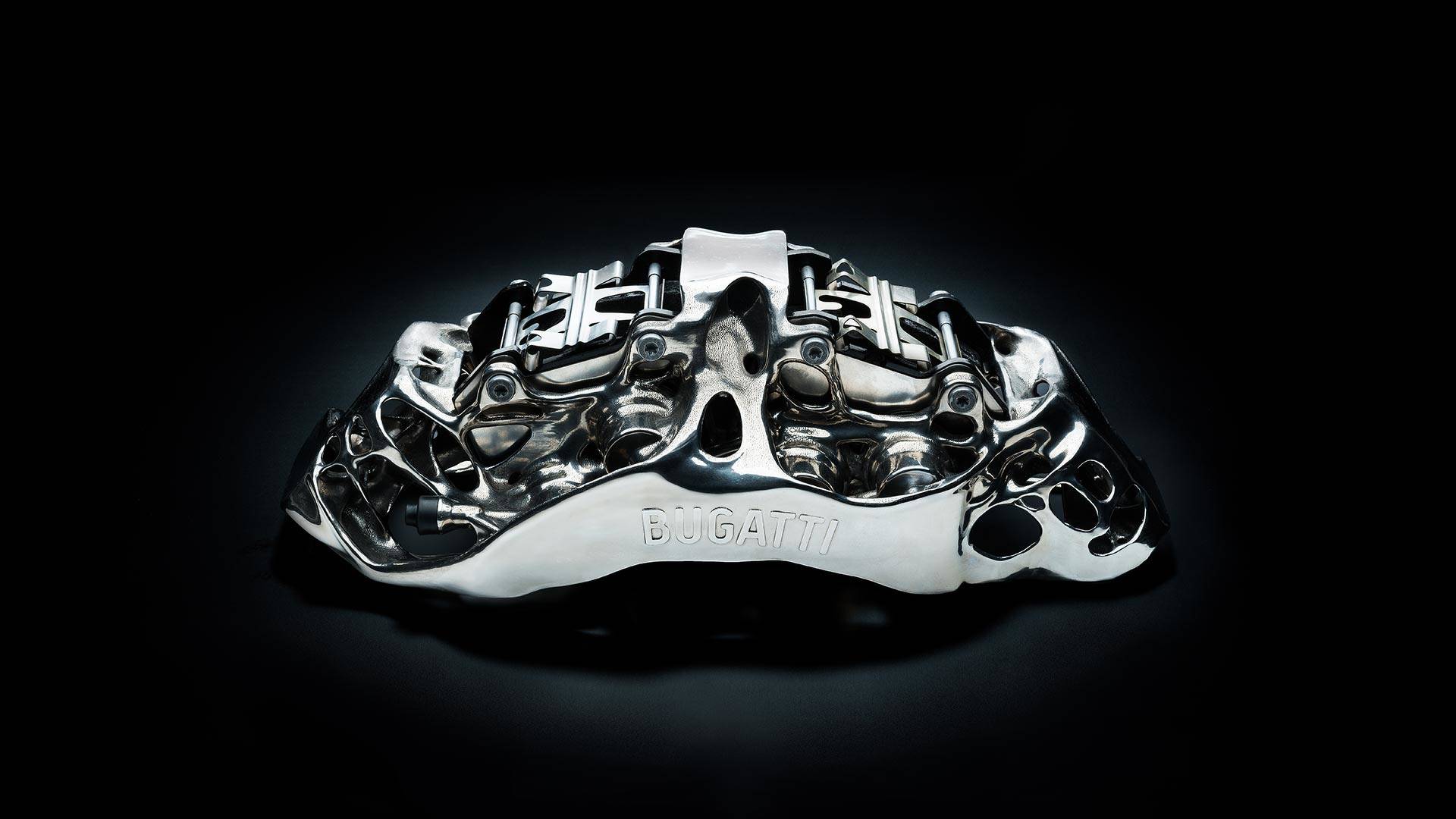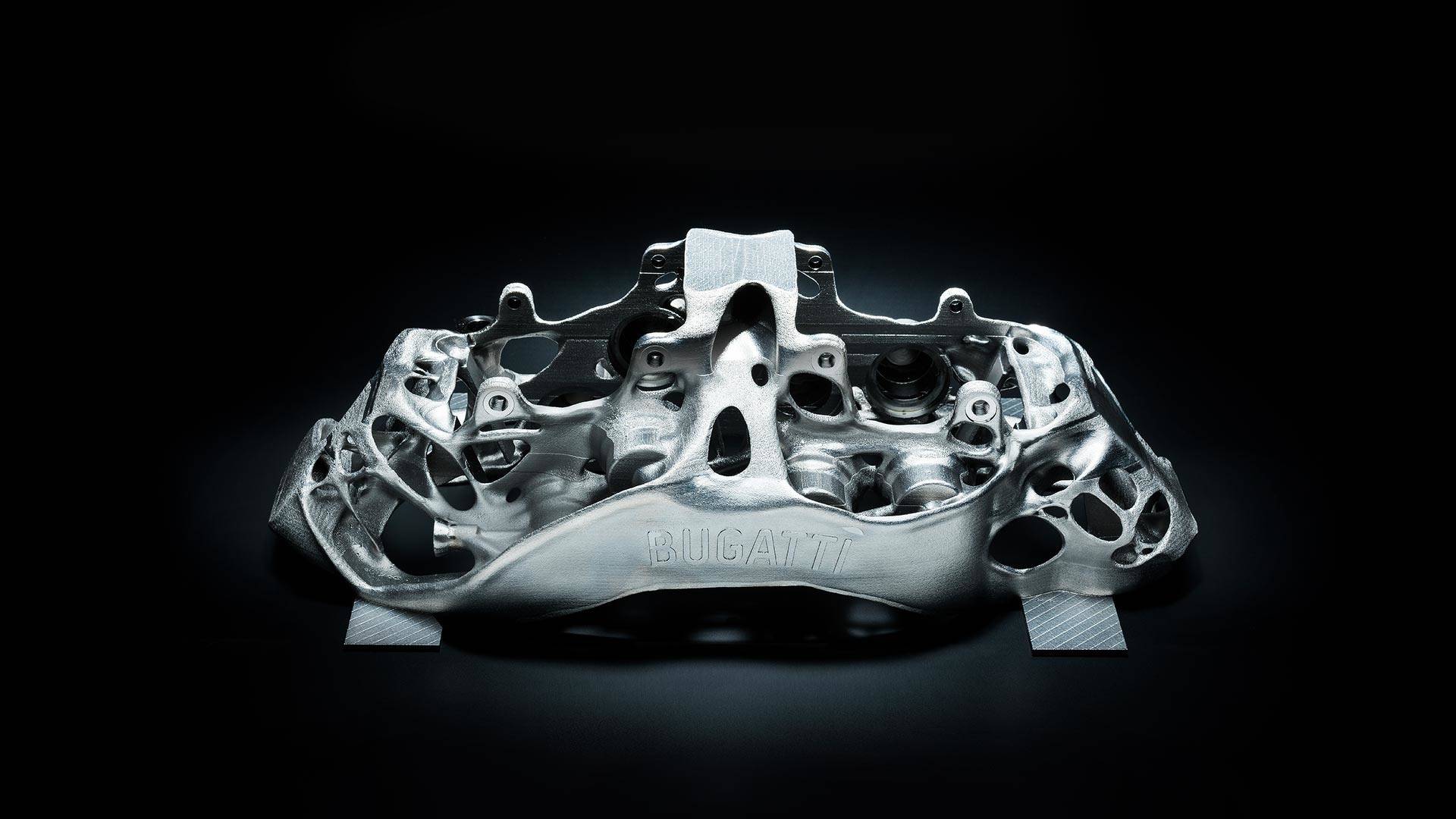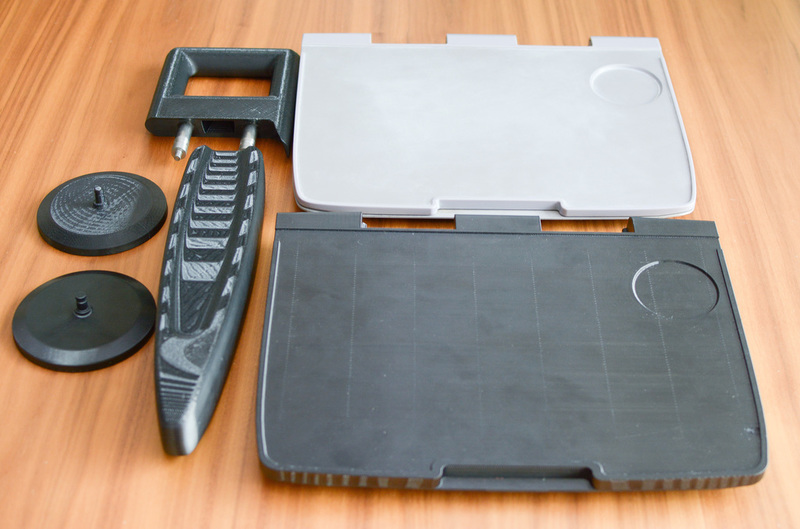Bugatti Automobiles successfully tested a brake caliper printed on a 3D printer

3D printing is becoming increasingly popular, and not among geeks, but in industrial companies. Print small parts and massive houses, print tools for the work of craftsmen and automotive parts. Recently, the network has information that the company Bugatti Automobiles has created a brake caliper (caliper) by 3D printing.
Of course, this part is made of metal, not plastic, but still, the method of its creation refers to the "printed". After the element was ready, it was tested, and all the checks the caliper went through, including heating when braking to a thousand degrees.
The advantages of 3D printing are that it allows you to create complex parts that do not require or almost do not require post-processing. In addition, you can print component parts in one piece than you can not do it by any other method. The structure of the part can be arbitrarily difficult - advanced 3D printers will cope with any task.

It is worth noting that 3D printing allows you to create analogs of ordinary parts, but with less weight. This is achieved, in particular, by changing the overall structure of the element. As for the caliper, it is standard, its geometric characteristics decided not to change.
The time to create such a part leaves much to be desired, since the process took 45 hours (unfortunately, the company did not say how long the standard part was created). The element of the brake mechanism was created from metal powder, it was sintered with a 400 watt laser beam. The whole part consists of 2313 layers of titanium powder.
The tests were conducted not in the field, and on the stand. The brake disc spun up to speed, which corresponds to a speed of 400 km / h in normal conditions. Then the brake started, the disk stopped. During the second test, the disc warmed up to 1.1 thousand degrees. The temperature was so high that the brake pads caught fire. The company recognized the tests as successful.
If the further tests go well, then Bugatti Automobiles will use the new process technology to create all the calipers for the Chiron hypercar.
It is worth noting that not only car parts are printed. For example, in the UK they plan to print parts for the train. In the normal situation, these parts are damaged quite often, and the railwaymen are unlikely to carry a large supply of them. In addition, the problem consists of trains that have been operated for a long time, and the mass production of spare parts for which are stopped.
As a result, the railroad workers have to contact the manufacturers with a request to accept a piece order, which is quite expensive. And if it is not a cosmetic, but a major overhaul, then its cost increases many times in comparison with the cost of overhauling a regular train, for which there are spare parts.

Source: railway-technology
Initially, the railroad will create the most breaking elements - plastic handles, all sorts of plating elements, plastic covers, armrests. They often break even in new cars, not to mention those that served several deadlines.
3D printing is not new to vehicle developers. A few years ago, the company Boeing filed an applicationfor a patent in the field of 3D printing. The new method involves the creation of spare parts on special printers. If something breaks, then the failed part can be printed in just a few minutes. In the plane there are thousands of elements, and it is quite difficult to create a stock of parts, and most importantly, it is expensive. After all, some parts may not be useful, and lie all the time in stock. Boeing is going to get rid of the need to store more than 30 thousand parts in storerooms, using the indicated principle instead.
Boeing is already replacing some plastic parts in its aircraft that have broken, with printed ones. But this is only the beginning, we are not talking about 30 thousand, the company is testing the replacement technology with only a few hundred parts. Most likely in the near future, many industries and transport will use 3D printing of different types.
